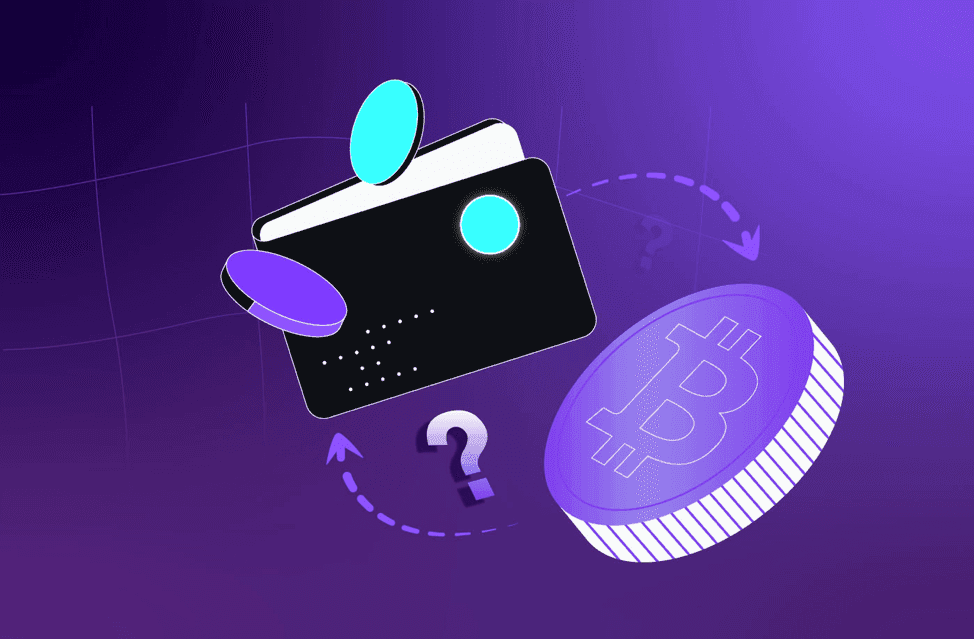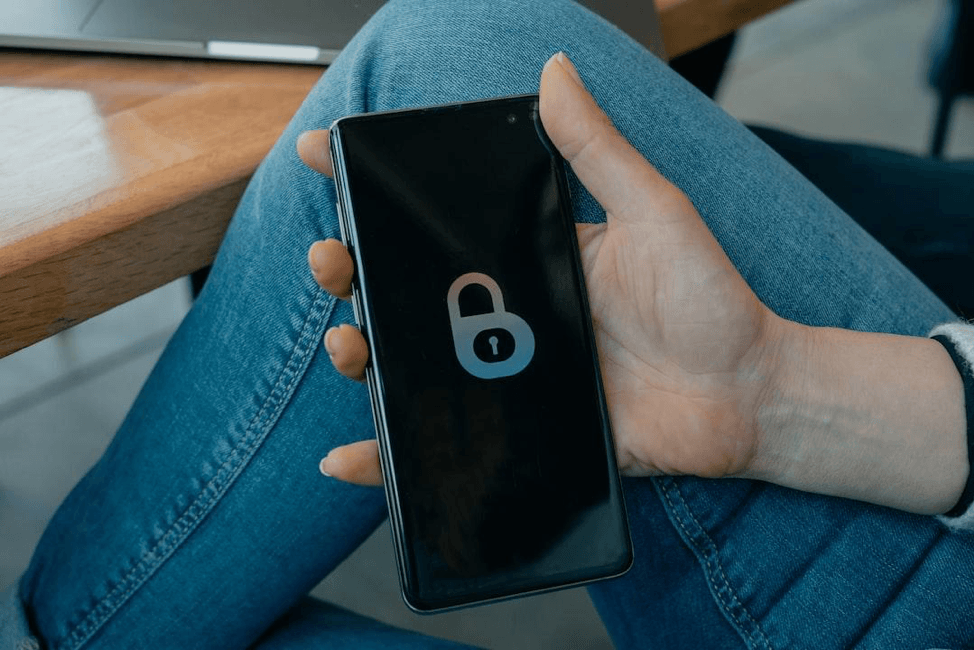How to Create a Crypto Wallet for Beginners: A Step-by-Step Guide
2023-07-18 09:14:30
In the fast-paced world of cryptocurrency, having a secure and reliable crypto wallet is essential. But if you're new to the game, creating a crypto wallet can seem like a daunting task. Don't worry - we've got you covered with this step-by-step guide on how to create a crypto wallet for beginners. Whether you're looking for software wallets, hardware wallets, custodial wallets, or non-custodial wallets, we'll break down all the types and help you choose the right one for your needs. Plus, we'll walk you through setting up your new wallet in just five simple steps. So let's dive in and take control of your cryptocurrency investments!
What Is a Crypto Wallet?
A crypto wallet is a digital tool that allows individuals to securely store, manage, and interact with their cryptocurrencies. Think of it as a virtual bank account, but instead of traditional currencies, it holds digital assets like Bitcoin, Ethereum, or other altcoins. By using cryptographic algorithms and advanced encryption techniques, crypto wallets provide a safe environment for users to store their private keys and conduct transactions in the decentralized world of cryptocurrencies.
These wallets come in various forms; some are software applications that you can install on your desktop or mobile device, while others are hardware devices specifically designed to provide an extra layer of security. Regardless of the type, the primary purpose remains the same: to ensure the safety and accessibility of your digital assets.
With the rising popularity of cryptocurrencies and their increasing adoption as a means of exchange and investment, having a crypto wallet has become essential. It empowers individuals to take control of their finances without relying on traditional banking systems or intermediaries. Moreover, owning a crypto wallet grants you access to participate in various blockchain-based projects like decentralized finance (DeFi), non-fungible tokens (NFTs), or even earn passive income through staking or lending your digital assets.

What Are the Types of Crypto Wallets?
When it comes to crypto wallets, there are several types to choose from, each offering its own set of advantages and considerations. Let's explore the most common ones:
Software Wallets
These wallets come in various forms, such as desktop software or mobile applications. They offer convenience and accessibility since they can be easily installed on your device. However, they are more susceptible to malware attacks compared to hardware wallets. Examples of software wallets include Exodus and Electrum.
Hardware Wallets
Hardware wallets are considered one of the most secure crypto wallets available. Popular examples like the Ledger Nano S or X are physical devices that store private keys offline, away from potential online threats. To use, simply connect the device to a computer or mobile device via USB and create a PIN code and recovery phrase for added security. Hardware wallets offer protection against malware and phishing, and while setup may be more complex than other wallets, their enhanced security features make them a great choice for those holding significant amounts of crypto.
Custodial Wallets
Custodial wallets, also known as hosted wallets, are a type of crypto wallet where a third-party provider holds and manages the private keys. This offers convenience and ease-of-use, making them popular with beginners. However, security is a concern as users are entrusting the provider with the safety of their funds. Additionally, users don't have full ownership of their funds and must abide by the provider's terms and conditions. Non-custodial wallets may be more suitable for those who prioritize security and full ownership of their funds.
Non-custodial Wallets
Non-custodial wallets, also known as self-custody wallets, give users full control over their digital assets. They eliminate the need for a third-party to manage funds and provide enhanced security and privacy. Popular options include MetaMask and Ledger Live hardware wallets. If you prioritize independence and security, a non-custodial wallet may be the right choice.
Online/Web Wallets
These wallets operate on cloud servers, accessible through web browsers or specific applications. They provide easy access from any device with an internet connection but have a higher risk of hacking due to their online nature. Online wallet providers like Coinbase and Blockchain.info fall into this category.
No matter which type you choose, it's important to consider factors such as security, ease of use, and compatibility with your desired cryptocurrencies when selecting a crypto wallet.

How to Set up a Crypto Wallet in 5 Steps
Setting up a crypto wallet may seem daunting for beginners, but it can actually be a straightforward process. In just five simple steps, you can create your own crypto wallet and start securely managing your digital assets. Let's dive into the step-by-step guide to help you get started on your journey into the world of cryptocurrencies.
1. Choose an Exchange
When setting up a crypto wallet, the first step is to choose an exchange. Consider security, fees, available cryptocurrencies, user experience, and customer support when selecting. Popular exchanges include Coinbase, Binance, Kraken, and FameEX. Visit their website to begin the signup process, which typically involves providing personal information and verifying identity. Set up a strong password and enable two-factor authentication (2FA) for extra security. Take some time researching different options before making a decision.
2. Sign Up for an Account
To create a secure crypto wallet, sign up for an account with a reputable provider. Provide required information, create a strong password, and verify your identity. Funds can be added by purchasing cryptocurrency or transferring from another wallet. Keep credentials safe and secure at all times. Taking these precautions during the sign-up process ensures a secure wallet.
3. Set up a Password
Setting up a strong and secure password is key to keep your crypto wallet safe. Create a unique, complex password with uppercase and lowercase letters, numbers, and special characters. Aim for a minimum of 12 characters. Avoid personal info like your name, birthdate, etc., and consider using passphrases instead. Enable two-factor authentication (2FA) for an extra layer of security. Keep your password confidential and update your software regularly.
4. Add Funds To Your Wallet
Once you have set up your crypto wallet, you can add funds to it in various ways. Purchase cryptocurrency through an exchange, receive payments from others, or transfer existing holdings from another wallet. For added security, hardware wallets store private keys offline. Ensure that the addresses are correct before initiating the transfer. Adding funds does not necessarily mean investing in cryptocurrencies; it is simply transferring ownership of assets into a digital storage solution.
5. Transfer Crypto or Purchase It Directly
Once you have set up your crypto wallet and added funds, you are ready to transfer or purchase cryptocurrencies. Obtain the recipient's wallet address from them or scan a QR code. Double-check the address before sending funds as crypto transactions are irreversible. Some wallets offer integrated exchange functionality to buy popular coins using fiat or other cryptocurrencies. Check if your wallet supports the crypto you want to transact with and factor in transaction fees.
Choosing the Right Wallet for Your Needs
When it comes to choosing a crypto wallet, the options can be overwhelming. The diverse range of wallets available in the market cater to different needs and preferences. It is crucial to consider various factors before deciding on the perfect wallet for you.
Why Do You Need a Wallet?
A crypto wallet is an essential tool for those interested in cryptocurrencies. It provides secure storage, complete control, accessibility, privacy, and diversification. With a crypto wallet, you can manage your digital finances with confidence and security.
Choosing a Backup Solution
Choosing the right backup solution for your crypto wallet is key. Popular methods include seed phrases and hardware wallets. Make sure to store the phrase securely and keep multiple copies in secure locations. Regularly test the restoration process to ensure your funds are always accessible if needed.
Ensuring Your Wallet is Secure
Secure your crypto wallet with a strong password, MFA, backups, and caution. Always double-check URLs and SSL certificates before sharing personal information. Choosing the right wallet is also key to safeguarding your digital assets.

How to Keep Your Crypto Wallet Secure?
Keeping your crypto wallet secure is crucial to protect your digital assets. Here are some important steps you can take to ensure the security of your crypto wallet and minimize the risk of unauthorized access or theft.
Use A Strong Password
Creating a strong password is essential for securing your crypto wallet. Aim for a password that is at least 12 characters long and includes a combination of uppercase and lowercase letters, numbers, and special characters. Make sure that each account has its own unique password, and avoid using personal information like your name, birthdate, or address. Consider using a password manager to generate and store complex passwords securely. Additionally, regularly update your passwords and enable two-factor authentication for extra protection. With these steps, you can safeguard your crypto wallet and digital assets from potential threats.
Use Multi-Factor Authentication
Enhance the security of your crypto wallet by enabling multi-factor authentication (MFA). This adds an extra layer of protection by requiring additional verification beyond just a password. Consider using Google Authenticator, Authy, or hardware security keys for added protection against phishing and other hacking attempts. Though it may take extra effort during login, MFA significantly reduces the risk of unauthorized access and potential loss of funds.
Backup Your Wallet
One of the most important things you can do when it comes to managing your crypto wallet is to create a backup. This ensures that even if something were to happen to your device or if you accidentally delete your wallet, you can still access and recover your funds.
There are a few different ways you can backup your wallet, depending on the type of wallet you have. Here are some common methods:
- • Write down your recovery phrase: Many wallets, especially non-custodial ones, provide users with a recovery phrase or seed phrase. This is usually a series of words that act as a backup for your wallet. It's important to write this down and store it in a safe place where only you have access.
- • Use an offline storage option: Hardware wallets like Ledger and Trezor offer an extra layer of security by keeping your private keys offline. These devices typically come with their own software that allows you to generate and store backups securely.
- • Backup files on external storage: If you're using a software or mobile wallet, it's always wise to regularly back up the wallet file itself onto an external storage device such as a USB drive or an encrypted cloud service.
Remember, creating multiple backups in different locations is highly recommended so that even if one backup gets lost or damaged, you still have another one available.
By taking the time to create backups of your crypto wallet, you'll have peace of mind knowing that even in worst-case scenarios, such as loss or theft of your device, accidental deletion of the app containing the wallet information; there are options available for recovering access to your funds.
Stay Away From Unauthorized Websites
When creating a crypto wallet, always use reputable sources and beware of potential scams. Phishing attempts are common, so double-check website URLs and be wary of offers that seem too good to be true. Consider enabling 2FA for extra security, and be on the lookout for red flags such as unsolicited emails. By following these steps, you can protect your crypto assets and stay safe.
Conclusion
Creating a crypto wallet is a must for anyone looking to enter the crypto space. Follow a step-by-step guide, set strong passwords, enable multi-factor authentication, and regularly back up your wallet. Have full control over your funds and participate in various crypto transactions. Educate yourself on how wallets work and stay updated on best security practices. Start exploring the world of cryptocurrencies by setting up your own crypto wallet today!
FAQ About How to Create a Crypto Wallet
Q: Is It Free to Create a Crypto Wallet?
Creating a crypto wallet is generally free. However, there may be transaction fees associated with using it. Some wallets may offer premium features for an additional cost. When choosing a provider, review their pricing structure and understand any costs involved. Consider potential transaction fees and any additional costs associated with premium features.
Q: How Can I Back Up My Wallet?
Backing up your crypto wallet is essential to protect your funds. Create a unique backup phrase or seed and store it securely in multiple locations. Consider using an encrypted hard drive, USB, or paper storage for added security. Test the restoration process before relying on your backups. Staying informed of best practices for securing crypto is an ongoing responsibility.
Q: What Is the Best Crypto Wallet for Beginners?
Choosing the best crypto wallet for beginners requires careful consideration. Popular options include software wallets like Coinbase Wallet, Trust Wallet, and Exodus; hardware wallets such as Ledger Nano S and Trezor; custodial wallets like Binance and FameEX; and non-custodial wallets like MyEtherWallet and Metamask. When selecting the right option, take into account user-friendliness, security, supported cryptos, customer support, reputation, compatibility, backup solutions, and any fees associated. No single wallet is perfect for everyone; it depends on individual preferences and requirements.
Q: How Can Private Keys Be Exported From a Crypto Wallet?
Exporting private keys from a crypto wallet is essential for users wanting to have full control over their funds. Depending on your wallet type, the process of exporting private keys may differ. Find the option to export and follow the instructions specific to your cryptocurrency and wallet provider. For extra security, consider offline methods such as writing down the private key and storing it safely. Remember to take extra precautions when dealing with sensitive information like private keys and never share them with anyone else.
Q: Can I Have Multiple Crypto Wallets?
You can have multiple crypto wallets for various reasons. Diversifying investments, security, separating personal and business transactions, and testing applications are just some of the scenarios where having multiple wallets can be beneficial. However, it is important to secure these wallets with strong passwords, 2FA, regular updates, and backups of important information.
The information on this website is for general information only. It should not be taken as constituting professional advice from FameEX.